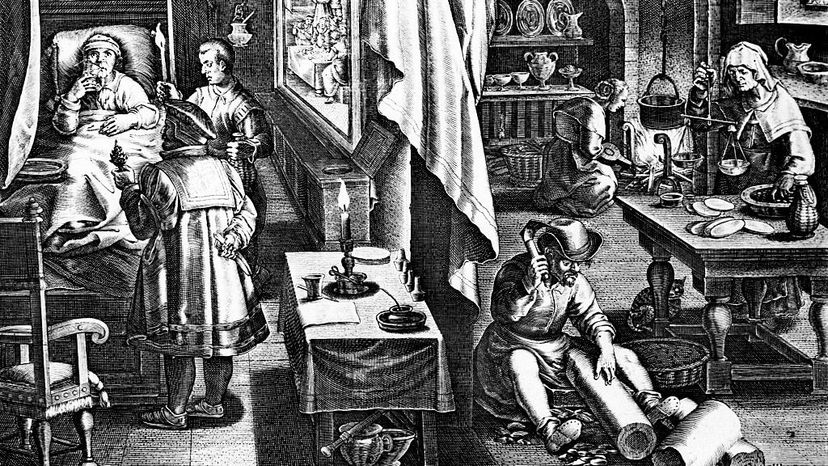
William Shakespeare mentioned diseases often in his plays, probably because he was literally surrounded by them. During his London-based lifetime, such notorious illnesses as bubonic plague, typhus and malaria ravaged citizens, all made more potent and deadly by rodents, overcrowding and virtually non-existent sanitation systems. Also striking fear into the hearts of just about everyone were smallpox and syphilis, also known as the "great pox."
The two conditions actually present similar rashes despite being different in type of disease and transmission. Smallpox is viral, spread by breathing; syphilis is bacterial and almost always sexually transmitted. The hallmark of both diseases was a body riddled with pustules, also known as pox (or pocks, if you're into ye Olde-English way of speaking). It fell to the people to distinguish between the horrors. Thus syphilis became known as the "great pox," because in the 15th to 17th centuries, it was the greater fear — not because the pock marks of syphilis were larger than those of smallpox.
Advertisement
Syphilis was likely introduced to Europe when Christopher Columbus's crew brought it back from the New World in 1493. Although there are other theories, the timing is definitely suspect – the pandemic began in Europe pretty much right after they returned, killing many. Even those who were lucky enough to survive were typically covered in scars and turned blind, clearly not such a pretty fate. In "return," the Europeans left behind smallpox and other diseases in the New World, which, along with slavery, wiped out millions of Native Americans. Smallpox is highly contagious, causes fever and even death in 30 percent of cases, according to the CDC. Fortunately, smallpox has now been eradicated by vaccine and we have penicillin to treat syphilis.
Shakespeare's writings indicate an interest in syphilis, such as in the play "Timon of Athens," where he references the use of inhaled vaporized mercury salts, a common treatment for the disease at the time. In fact, one of his best-known quotes was originally a reference to syphilis – "A plague on both your houses!" from "Romeo and Juliet" was first "A pox on both your houses."
Advertisement

